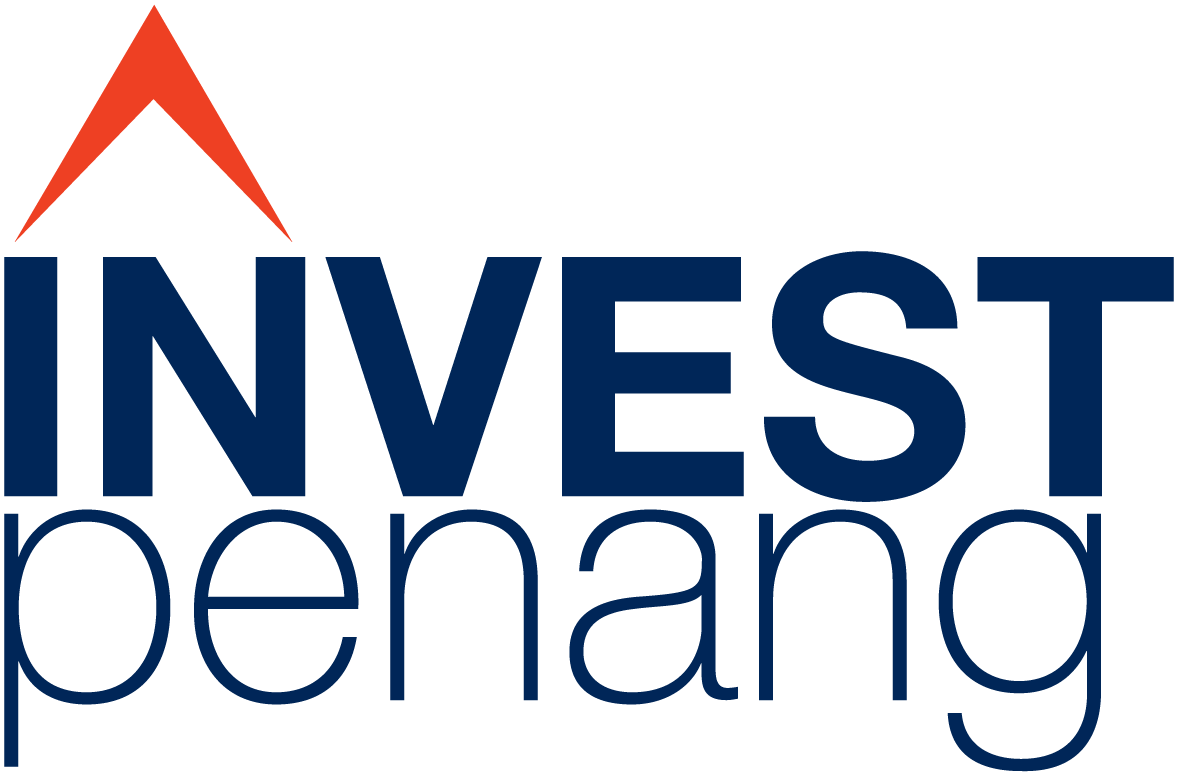


March 11, 2024 — Tension between Beijing and Washington over access to technology has prompted many companies to open factories in south-east Asia
Shortly after a Chinese company opened up nearby, employees at Malaysian contract manufacturer Kemikon walked outside their factory to find sheets of paper stuck to their car windshields.
The flyers were from Fengshi Metal Technology, a Suzhou-based rival that operates in similar areas of semiconductor equipment manufacturing. They promised salaries 30 per cent above the market rate and other “unique opportunities” including overseas travel and free meals.
Fengshi is one in dozens of companies setting up or expanding in Penang — a state in northern Malaysia better known for its beaches, varied cuisine and laid-back atmosphere — in the past 18 months. Others include American chip giants Micron and Intel and European semiconductor companies AMS Osram and Infineon.
As companies around the world look for a back-up to China to protect themselves from geopolitical disruptions — a strategy known as China plus one — Malaysia is becoming a surprise investment destination.
It has a 50-year history in the “back end” of the semiconductor manufacturing supply chain: packaging, assembling and testing chips. But it has ambitions to move up to the front end of a $520bn global industry that powers everything from televisions to smartphones and electric vehicles. That includes higher value activities such as wafer fabrication and integrated circuit design.
The broadening US curbs on Chinese technology, especially for chipmaking, are a key reason for neutral Malaysia’s appeal, say industry groups. America is jostling with China for global technology supremacy and has enlisted support from allies in Europe and Asia as it restricts sales of the most advanced chips and manufacturing equipment to its geopolitical rival.
Foreign investment pours into Penang


“It’s a rush. It’s not only Chinese companies [setting up in Penang]. It’s Korean, it’s Japanese, and it is western,” says Marcel Wismer, Kemikon’s chief executive. “And all of this is related to the tech war between the US and China.”
Kemikon builds parts, such as machine frames, for clients including LAM Research and Applied Materials in the US. Fengshi is not the only Chinese company to try to poach his employees, Wismer says.
He adds that major western semiconductor equipment manufacturers cannot sell their most advanced equipment to China because of US restrictions. “But the other part of the story is all of these manufacturers source parts from Chinese companies,” he explains.
“So they tell their suppliers: if you don’t move out [of China], we have to find new ones. Chinese companies are then forced to move or expand to places like south-east Asia so they don’t lose business. That is where Penang comes in.”
Investment is booming. The state attracted RM60.1bn ($12.8bn) in foreign direct investment in 2023, more than the total it received from 2013 to 2020 combined.
Developing Malaysia’s semiconductor industry and workforce into this higher value manufacturing is a “critical goal,” says prime minister Anwar Ibrahim in an interview with the Financial Times.
Malaysia is at “a very critical moment, a departure from our history,” he says, while looking across one of Penang’s factory floors. A native of the state, he admits to being personally proud at its boom.
But the narrative has distinct vulnerabilities. These include a severe talent shortage and a failure to create a domestic semiconductor champion that can draw in others.


The semiconductor manufacturing supply chain is a key target of Prime Minister Anwar Ibrahim’s industrial plan as he focuses on reviving Malaysia’s economy © Julia Bellack/FT
Another is politics. Washington has already put pressure on Kuala Lumpur for “tilting” towards Beijing under Anwar, who took office in 2022. The US, the biggest contributor to Malaysia’s FDI, may clamp down further on Chinese technology; some analysts and industry groups fear it may restrict products and equipment built in Malaysia by the flood of new Chinese companies.
But Gautam Puntambekar, country executive for Bank of America, says that “when you talk about semiconductors, Malaysia is invariably part of the conversation”.
“Supply chain diversification from China remains a top focus for companies,” he says, adding that this will only speed up ahead of elections in 2024 and makes Penang “one of the most interesting spots in Asia right now”.
_____
In 1972, a muddy paddy field in Penang became the first production facility outside the US for Intel. Lured by a new free trade zone and a busy shipping port in the Malacca Strait, Intel, alongside AMD, Renesas (formerly Hitachi), Keysight Technologies (formerly Hewlett-Packard) and several other tech multinationals were the pioneers of what used to be called the “Silicon Valley of the East”.
Malaysia became a well-oiled machine in the packaging assembly and testing of chips, until recently considered a fairly low-end, labour intensive but necessary part of the semiconductor manufacturing supply chain.
It is already the world’s sixth largest semiconductor exporter and holds 13 per cent of the global semiconductor packaging, assembly and testing market. It is the origin for 20 per cent of US semiconductor imports annually, more than Taiwan, Japan or South Korea. But there hadn’t been much of a catalyst for it to move up the value chain in semiconductors — until now.
Demand for ever more high-powered chips in sectors such as electric vehicles and artificial intelligence means so-called advanced packaging — which connects chips to their circuitboards and protects them from contamination — is regarded as key to improving performance. A previously labour-intensive process now often takes place in highly automated factories.
Intel, the world’s largest chipmaker by revenue, is spending $7bn on new facilities in Malaysia, including a “3D” advanced packaging site due to be finished later this year. The cutting-edge technology stacks chips on top of each other to improve performance.
It is also building another chip assembly and testing factory in Kulim, which borders Penang. “We have grown from 100 people in assembly, to test, to design [and now] to advanced packaging and to 15,000 people,” says Eric Chan, a Penang-based vice-president at Intel. Malaysia’s existing ecosystem, connectivity and infrastructure for chips was part of the appeal, he says.
_____
Malaysia led the world in US chip imports last year
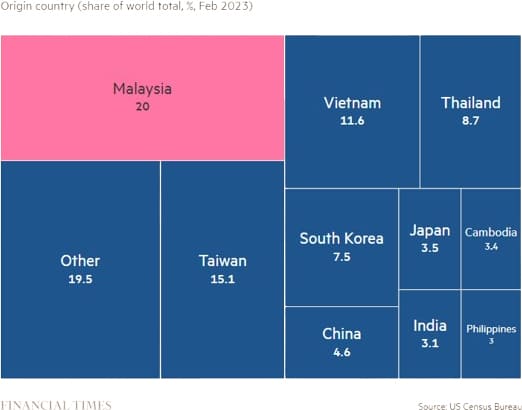

Micron and Germany’s Infineon are also in expansion mode. US-based Micron last year launched its second facility for assembly and testing in Penang, while Infineon, a subsidiary of German engineering conglomerate Siemens, said it would spend up to $5.4bn to expand over the next five years. It is building the world’s largest production site for the silicon carbide chips widely used by makers of electric vehicles.
David Lacey, a Penang-based executive for AMS Osram, says supply chain diversification started with the pandemic but “the geopolitical [backdrop] is causing people to find alternative locations and sources”. The Swiss-based electronics group was one of the first overseas companies to establish a presence in Penang and is still investing there.
Zafrul Aziz, Malaysia’s minister for investment, trade and industry and chair of the national semiconductor task force launched in February, says he was surprised by how much more productive and automated factories in Penang have become. “I go to [the US] now and the machinery and tools used to manufacture the chips are from Malaysia.”
There is a flow-on effect to start-ups. Oppstar, one of the few Malaysian companies specialising in integrated circuit design — the front end of the supply chain — last year listed on the Kuala Lumpur stock exchange.
Co-founder Tan Chun Chiat says Malaysia has a “golden opportunity” to exploit. “For the next 10-plus years, I think we will see a lot more activity because of inefficiency being created from the [US-China] trade war.”
_____
The investment rush has caught out even Penang’s business-friendly government. Anwar’s visit over lunar new year coincided with yet another ground breaking ceremony on an industrial site to cater to the growing demand.
Penang’s government owns much of the land in the state, a boon for its coffers. Loo Lee Lian, chief executive of Invest Penang, the non-profit arm of the state government, says the organisation has had to become “more selective” on who comes in due to the squeeze on land. Development has spilled over into neighbouring states Kedah and Perak.
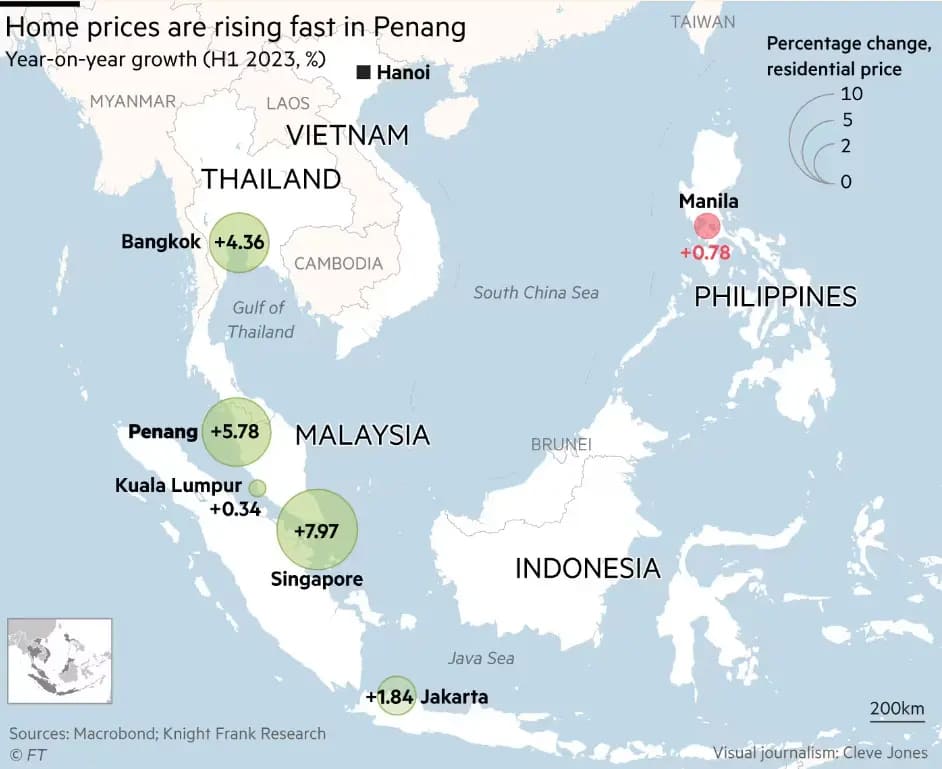

Prices of industrial land have gone from about RM50 per square foot in 2022 to as much as RM85 per square foot, according to Mark Saw, executive director at Knight Frank Penang, a real estate consultancy. Across south-east Asia, Penang’s residential property price growth in the first half of 2023 was second only to the expensive city-state of Singapore, according to Knight Frank.
Traffic jams have become a regular feature; Micron Malaysia vice-president Ramu Iyer jokes that despite living just 14km from his factory he spends an hour in traffic getting home each day.
The country’s engineering staff shortage has also become more acute. Zafrul, the trade minister, says the electrical and electronics sector alone requires 50,000 engineers, but only 5,000 engineering students graduate each year — and many of them slip across the causeway to Singapore, where they are paid much more. Engineering salaries, especially for starting graduates, are still below most other professional sectors in Malaysia and experts say there is a lack of specialised expertise crucial for moving up to the front end of the supply chain.
Tan Eng Kee, whose Malaysia-listed factory automation equipment specialist Greatech Technology hosted Anwar on his visit to Penang, says the government needs to be “more focused” on growing local champions and boosting salaries. “In Taiwan and South Korea, they are proud to work for national companies like TSMC, Pegatron or Samsung,” the chief executive says.
Historically there has been a lack of political will to offer the targeted incentives needed to lure the biggest semiconductor companies to set up capital-intensive fabrication plants, known as fabs, and Malaysia does not have a national champion in semiconductors like Taiwan’s TSMC.
Malaysia’s fifth prime minister in five years, Anwar acknowledges a degree of past “complacency” when it came to boosting the semiconductor industry after the initial boom in the 1970s and 1980s. But the industry is now a key target of his industrial plan as he focuses on reviving the economy.
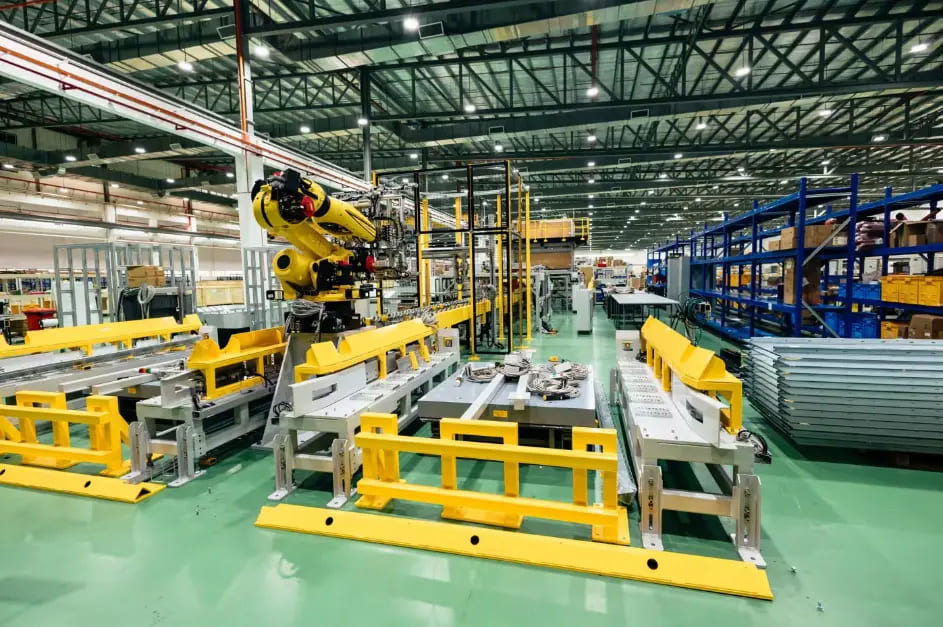

Anwar says many of the global subsidies are excessive, but has told the trade ministry to look at what other countries are offering to stay competitive. “We are getting enough investment. I am here [in Penang] to open a new [site],” he adds.
_____
Much of that is thanks to the rise of new players in Penang: Chinese companies.
Since the US began imposing trade restrictions on Chinese technology under the Trump administration, and especially since they were tightened by current US President Joe Biden, Penang started to see a flood of interest from mainland groups like Fengshi, according to InvestPenang’s Loo.
Many of these are companies with global suppliers or western customers hedging against further US restrictions, she says. InvestPenang estimates there are now 55 mainland companies in Penang operating in manufacturing, mostly in semiconductors. That compares to just 16 before the American crackdown began.
US restrictions do not currently apply to advanced chip packaging services, but Chinese businesses fear potential future curbs, says one Hong Kong-based analyst for a Chinese company, who asked to remain anonymous. Some are de-risking by partnering with Malaysian firms to assemble a portion of their high-end chips, they added.
Former Huawei unit xFusion is partnering with local operator NationGate to manufacture graphics processing unit servers in Penang. In some cases Chinese and US companies even work together. Packaging and testing company TongFu Microelectronics expanded its Penang facility in partnership with US group AMD in 2022.
“When the country of origin changes to somewhere like Malaysia, I understand from companies that for some products you can also avoid tariffs imposed by the US on China,” adds Seri Wong Siew Hai, president of the Malaysia Semiconductor Industry Association.
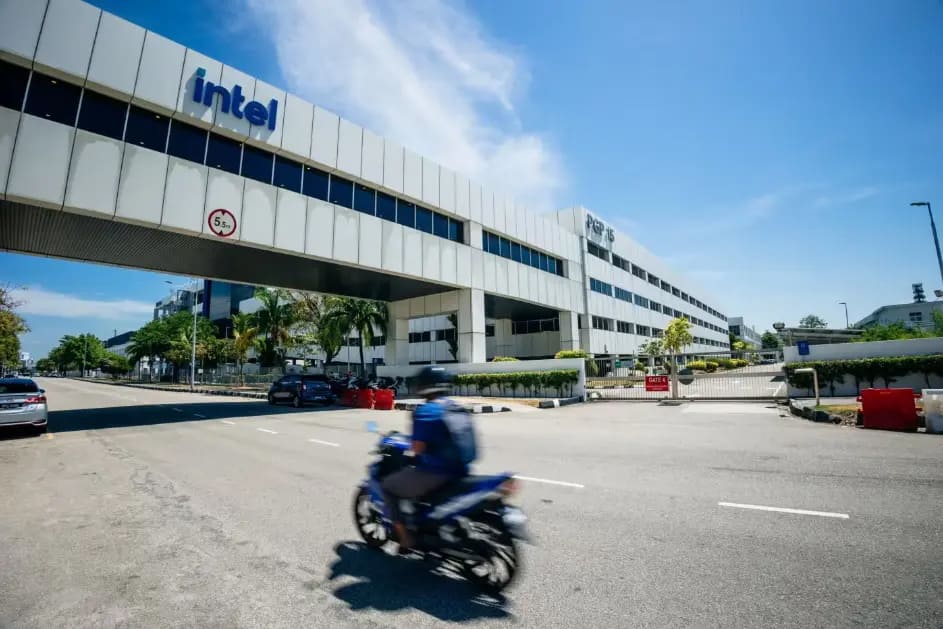

Intel, the world’s largest chipmaker by revenue, is spending $7bn on new facilities in Malaysia © Julia Bellack/FT
South Korean company Simmtech, which makes the substrates on to which integrated circuits are etched, opened a new advanced manufacturing factory in Penang in 2022 and within months announced it would fast-track the facility’s expansion. Some of its Chinese suppliers have followed it to Penang and set up operations there, says one person familiar with the company’s operations.
Most Chinese players are still from the assemble-and-test part of the supply chain. But analysts say that if companies in more sensitive and higher-value sectors start to set up shop, that may invite scrutiny.
Shanghai-based StarFive Technology is a leader in RISC-V (pronounced “risk five”), an open-source technology used in China that competes with the likes of British chip designer Arm. It is building a facility in Penang, but some US lawmakers already want to restrict American companies from collaborating on RISC-V projects.
The issue will be if the Americans keep broadening their criteria, says MSIA’s Wong — for instance, by putting products and equipment built in Malaysia on the restricted list. “If they continue to expand their definitions and sanctions . . . then [Malaysia] may be looking at a different story.”
Zafrul, the trade minister, agrees there is a “question mark” over what else the US could do. “But further restrictions will probably prove counterproductive, especially considering the significant presence of US companies in Malaysia,” he adds.
In the meantime Malaysia must focus aggressively on growing high-end investments or “lose out” to regional rivals, Zafrul adds. Vietnam and India are building their own semiconductor industries, often with much higher state incentives and many more skilled engineers at their disposal.
His sense of urgency is warranted. Malaysia may have received record investment in recent years, but it still lacks the big prize: a front end fabrication plant. Of around 80 such facilities set to be built worldwide over the next few years, not one is in Malaysia.
“I am optimistic that we will attract more than one,” Zafrul says. “All it takes is one to kick-start a wave.”
Source: Financial Times
